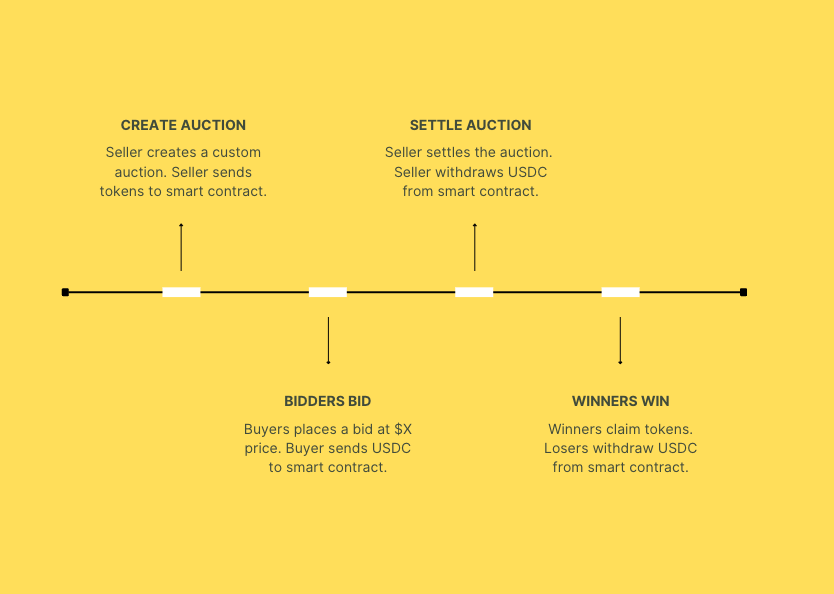Auctions are everywhere. Anyone can bid. eBay alone does 2 billion transactions daily. Last year, the top 3 auction houses hit a record of $15 billion in sales. So, what are people bidding on? Turns out, pretty much everything.
Last month, @mevcheb posted a blog called When Winners Don't Win which explained some of the different auction types that we researched. As a follow up, this blog explains what we chose to build and why.
In May, RM Sotheby's auctioned a 1955 Mercedes-Benz for $142 million. A few days earlier, Christie's auctioned an Andy Warhol for $195 million. Phillips auctioned a 1958 Rolex Daytona for $17.8 million. Some grapes auctioned for $11 thousand ($450 dollars per grape).

People talk price tags but not auction mechanics. Do bidders understand auction strategies? Do sellers have a say in auction type? In the few NFT auctions that I bid (and lost) in, I had no idea beyond highest price should win. Right? Turns out no.
SIZE Matters
At SIZE, we set out to build the best ways to trade large amounts of tokens. "Best" as defined by fair market price, accessible deal flow, and market participation.
Using SIZE, sellers create auctions with custom parameters for vested or unvested tokens. We plan to soft launch with two auction types: sealed bid and multi-unit dutch.
Sealed Bid Auctions
In sealed bid auctions, no bidder knows how much the other auction participants bid. Historically, this has involved placing your bid in a sealed envelope and delivering it to the auctioneer, who opens all the bids together and reveals the auction winners.
At SIZE, we believe that sealed bid auctions preserve characteristics that make auctions more fair for all participants. We have developed a variant of the sealed bid auction where all bidders commit to a price and encrypt their bid to the seller using well-known asymmetric encryption. The seller is trusted & incentivized to reveal the bidders who bid the highest.
All winning bidders get cleared at the same price, meaning that highest bidders get filled the same as lowest winning bidders. Lowest clearing price simplifies the user experience and creates a level playing field for all buyers.
Multi-Unit Dutch Auctions
In dutch auctions, the price decreases over time and all bids are accepted until all the items are sold. The auction participants that bid during the time get filled at the lowest clearing price.
SIZE uses a multi-unit dutch auction implementation. The seller sets an initial price above reserve as well as a custom step function. The price then decreases by a certain percentage every time period, where bidders have an opportunity to secure tokens at that price or lower. The auction ends when all the tokens are sold or time runs out.
Again, all winning bidders get cleared at the same price. Any bidder that bought at a price higher than the last traded level will receive a refund in the auction paid token.
What's The Difference?
SIZE's sealed bid and dutch auctions are pretty comparable. Dutch auctions are essentially sealed bid auctions that settle instantaneously without a counterparty. Dutch auctions are more common in crypto while sealed bid auctions are less prevalent. That said, the underlying concepts are very similar!

Some subtle differences:
- In dutch auctions, bidders are guaranteed to win based on bid time placed.
- In dutch auctions, bidders must place bids based on a step function.
- In sealed bid auctions, bidders can enter later and still place winning bids.
- In sealed bid auctions, bidders can place bids at any price.
Which Auction Is Right For You?
We believe that both auction types provide a superior experience over traditional auctions for both buyers and sellers. The biggest difference is in the user experience which makes the choice largely preference-based. We are keen to aggregate user feedback and see which auction type gains the most traction.
Stay tuned for our soft launch. In the meantime, if you have feedback or questions, don't hesitate to reach out. We want to hear from you.

